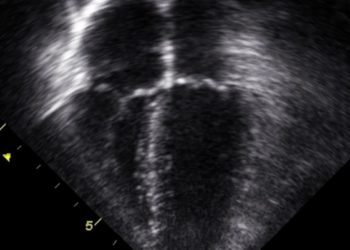Team-based care with a clinical decision support system reduces cardiovascular risk factors in diabetic patients
1. Team-based care with a clinical decision support system was associated with significantly reduced cardiovascular risk factors in diabetic patients.
2. Team-based care with a clinical decision support system was also associated with significantly reduced HbA1c levels.
Evidence Rating Level: 1 (Excellent)
Study Rundown: The prevalence of diabetes in Chinese adults aged 20 years or older has increased from 2.5% in 1994 to 12.4% in 2018. Most patients with diabetes have multiple comorbid conditions, including cardiovascular disease (CVD). A current major barrier to diabetes control is the insufficient number of diabetes specialists in low- and middle-income countries (LMICs). A computerized clinical decision support system (CDSS) that helps providers implement protocol-based treatment could improve both adherence to clinical guidelines and patient outcomes. However, there is a gap in knowledge as to understanding the effectiveness of team-based care with a CDSS versus team-based care alone in controlling CVD risk factors among patients with diabetes in community health centers (CHCs). Overall, this study found that team-based care with a CDSS significantly reduced CVD risk factors compared with team-based care alone among patients with diabetes in CHCs. This study was limited by not including a usual care control group, as well as not collecting implementation outcomes among clinic managers, primary care physicians, and health coaches. Nevertheless, the study’s findings are significant, as they demonstrate that team-based care with a CDSS improves the management of patients with diabetes, and integrating team-based care with a computerized CDSS could be especially appropriate in primary care settings in LMICs.
Click to read the study in AIM
Relevant Reading: Effect of Social Needs Case Management on Hospital Use Among Adult Medicaid Beneficiaries
In-Depth [cluster randomized trial]: This open-label, cluster-randomized trial was conducted at 38 CHCs in Xiamen, China. Patients who were 50 years or older with uncontrolled diabetes were eligible for the study. Patients who had an HbA1c level <7% were excluded from the study. The primary outcomes measured were the mean changes in HbA1c levels, LDL cholesterol (LDL-C) levels, and systolic blood pressure (BP) from baseline to 18 months simultaneously modeled for a single overall treatment effect. Outcomes in the primary analysis were assessed via an intention-to-treat analysis and a scaled marginal model with logistic regression. Based on the primary analysis, during the 18-month intervention HbA1c levels, LDL-C levels, and systolic BP significantly decreased by -0.9% (95% Confidence Interval [CI], -0.9 to -0.8%), -0.49 mmol/L (95% CI, -0.53 to -0.45 mmol/L), and -9.1 mmHg (95% CI, -9.9 to -8.3 mmHg), respectively, in team-based care with a CDSS. In the team-based care alone group, HbA1c levels, LDL-C levels, and systolic BP decreased by -0.6 percentage points (95% CI, -0.7 to -0.5%), -0.32 mmol/L (95% CI, -0.35 to -0.29 mmol/L), and -7.5 mm Hg (95% CI, -8.4 to -6.6 mm Hg), respectively. Net differences were -0.2% (95% CI, -0.3 to -0.1%) for HbA1c levels, -0.17 mmol/L (95% CI, -0.21 to -0.12 mmol/L) for LDL-C levels, and -1.5 mm Hg (95% CI, -2.8 to -0.3 mm Hg) for systolic BP. Overall, this study demonstrates that team-based care with a CDSS significantly reduced cardiovascular risk factors in patients with diabetes as compared with team-based care alone.
Image: PD
©2022 2 Minute Medicine, Inc. All rights reserved. No works may be reproduced without expressed written consent from 2 Minute Medicine, Inc. Inquire about licensing here. No article should be construed as medical advice and is not intended as such by the authors or by 2 Minute Medicine, Inc.







